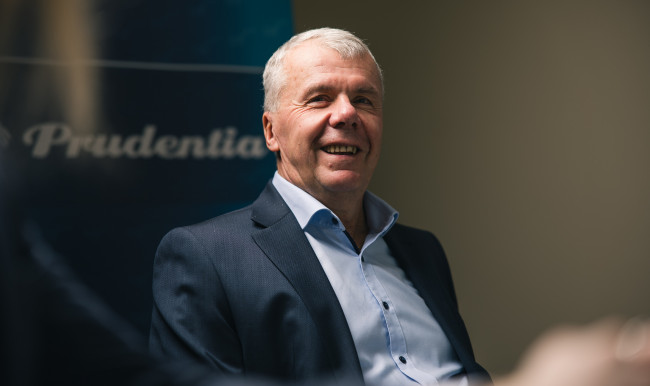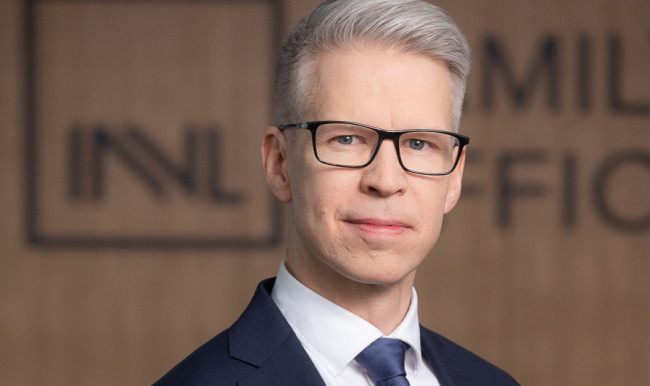Illar Kaasik
Partner at Prudentia Estonia
The winner of this year's TOP101 ranking - Eesti Energia, which has been declared the most valuable company in Estonia, receives a price tag of 1.6 billion euros (+ 28% compared to the previous year) from the ranking’s calculation methodology. With this, the Estonian energy giant is currently beating its major Lithuanian competitor Ignitis Group, which went public this autumn, that has a valuation of 1.5 billion euros calculated according to the TOP methodology. What comes next though - how will the former state monopolies and the Ignalina nuclear power plant in Lithuania and the Narva oil shale plants in Estonia lead to a green revolution in the Baltic energy sector, and what will this mean for the value of the companies?
Eesti Energia and Ignitis Group are the largest energy companies in Estonia and Lithuania, respectively. This summer, Ignitis Group had the largest-ever IPO in the Baltics and issued nearly 1.9 million shares, attracting 450 million euros from investors. At the time of listing, the value of the company's equity after the IPO was 1.67 billion euros, but today the share price has fallen by almost a tenth (22.5 euros versus 20.3 euros) and thus the value of the company has also fallen. After the stock issue, the company is still controlled by the Lithuanian state, whose share is 73.1%.
In this article, we compare Eesti Energia and Ignitis Group on the basis of 2019 year end data which is available for both. Both companies no longer limit their activities to their countries of origin but consider the entire Baltic Sea region to be their home market. Eesti Energia is one step ahead of Ignitis here, having also reached the creation of a Swedish bridgehead.

Eesti Energia was founded in 1939 and as of the end of 2019, the company employed more than 5,000 people. Historically, shale has been the main raw material for energy production in Estonia. Historical experience in shale mining and processing has provided the company with unique know-how, which in addition to Estonia has now been applied for example in Jordan, the USA and Turkey. At the same time, dependence on shale has also been a major challenge for Eesti Energia in the context of the green revolution.
Changes in global climate policy and the European energy economy have led to the realisation that burning shale as an organic resource with limited availability is unsustainable. In recent years, the price of CO2 quotas has also risen sharply, due to which, in conditions where the price of electricity has not increased on the market, the production of electricity from shale can even be an unprofitable activity.

Ignitis Group (formerly Lietuvas Energia) was established in 1991, and at the end of 2019 the company employed about 4,000 people. Lithuanian energy was historically characterised by the Ignalina nuclear power plant, which closed in 2009. As of today, Lithuanian energy is also distinguished from Estonian energy by a large share of hydropower. Namely, Kruonis Hydro Accumulation Station has 900 MW and Kaunas Hydro Power Plant 101 MW of electricity generation capacity. Ignitis Group also owns the Lithuanian electricity transmission network, the operation of which currently generates a significant part of the company's profit.
In fact, the biggest challenge for both companies is to increase the share of renewable energy in their energy production. In 2019, Ignitis Group produced a total of 1.04 TWh of energy from renewable energy sources and Eesti Energia 1.28 TWh, while the total energy production was 1.06 TWh (LT) and 5.55 TWh (EST), respectively. Wind and solar parks and electricity produced from biomass are the main solutions to production in the field of renewable energy.


Eesti Energia's strategy envisages increasing the share of renewable energy to 45% of total production by 2023. In order to increase the share of renewable energy, the company for example acquired the Tootsi wind farm development project in 2020 has prepared an IPO for Enefit Green to attract additional capital for faster implementation of development projects. The purchase of Nelja Energia a few years ago also made a significant contribution to increasing Eesti Energia's renewable energy capacity. In terms of forming goodwill, this purchase was also an important factor that led to this year's TOP101 victory, as the higher production capacity and share of renewable energy gave Eesti Energia a better sector benchmark.
Ignitis Group plans to direct almost half of its 1.7-2.0 billion investment portfolio into the field of green energy in 2020-2023. By 2030, the company plans to reach 4 GWh of total green energy capacity.
Both companies are looking for opportunities to develop additional services. In 2020, Eesti Energia acquired the charging network for electric cars, predicting that by 2025 the price of conventional and electric cars will have equalised, and this will be accompanied by a huge need to develop the charging network. The company is also developing new services in this area. Namely, the energy producer plans to offer the owner of an electric car the possibility of two-way charging in the near future.
Thus, electric car battery banks would also perform an energy storage function, thus increasing the efficiency of energy use in the energy system. Eesti Energia is also developing off-grid solutions consisting of solar panels, a battery bank, a backup generator and a smart control system. Such a solution makes it possible to provide electricity without a grid. For example, in Estonia in 2018, Enefit Green installed an off-grid test solution on the island of Ruhnu. Another interesting example is Elektritest, developed in cooperation with Microsoft and marketed in international channels. Of course, both Eesti Energia and the Ignitis Group are investing in the digitisation of processes, the reduction of electricity network losses and the increase of supply security.
When and how will Enefit Green make its stock market debut?
From the Estonian perspective, Eesti Energia and Ignitis Group are well matched opponents. However, a direct comparison of the two companies will be made a little more difficult in the future by the fact that one is listed and the other is not, and even more so that Eesti Energia plans to list only a part of itself - namely Enefit Green, which focuses on renewable energy solutions. Although Eesti Energia executives have given many so-called “muscle flexing interviews” about the IPO being prepared, it is still unknown at the moment what kind of Enefit with which development perspectives and investment projects will be sold. And more importantly, how does the current owner intend to price its wholly owned subsidiary?
Current known benchmarks from Enefit Green's 2019 report are as follows: sales turnover - EUR 119.8 million (versus EE consolidated figure of EUR 956.4 million); operating profit EUR 49.5 million (versus EE consolidated figure of EUR 71.9 million) and net profit EUR 36.8 million (versus EE consolidated figure of EUR 23.2 million). We can now look forward to the next act in the duel of the two greats of the Baltic energy market.


